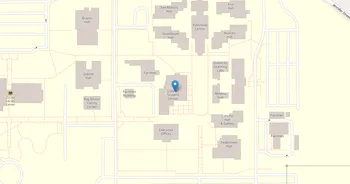Wiley University : Overview, Courses, Scholarships & Rankings
About Wiley University
Known for a storied debate tradition that inspired a major film, this Marshall campus pairs HBCU heritage with personal, hands-on learning. Students explore the arts and humanities, social sciences, business and leadership, teacher preparation, and the sciences. You'll find bright labs, a focused library, tutoring and advising, counseling and wellness support, and a lively student center beside residence halls and a well-used rec and fitness space.
Student life feels friendly and purposeful. Clubs, service projects, open-mic nights, and intramurals keep things lively, and homecoming is a big deal. Career prep runs through classes and co-curriculars, from faculty mentorship to internships across East Texas and ties into nearby cities. Marshall brings historic charm, local eats, and quick access to lakes and piney-woods trails. Debate traditions still shine, and notable alumnus James Farmer Jr. is often cited with pride.
Key Institutional Details
Contact & Profile
Academic & Institutional
Academic Programs & Fields of Study
Wiley University offers 9 degree programs across 6 major academic fields, graduating approximately 55 students annually. The most popular fields by graduate volume are Business (2 programs, 25 graduates), Security & Safety (2 programs, 13 graduates), Social Sciences (1 programs, 8 graduates), Biological Sciences (1 programs, 4 graduates) and Education (2 programs, 3 graduates). Explore program details, award levels, and graduate demographics below.
Business (2 programs, 25 graduates)
Business Administration, Marketing and Entrepreneurship
| Program Name | Graduates | Gender Distribution | Award Levels | CIP Code |
|---|---|---|---|---|
| Business Administration and Management | 14 |
|
Bachelor's
|
52.0201 |
| Nonprofit and Organizational Management | 11 |
|
Bachelor's
|
52.0206 |
Security & Safety (2 programs, 13 graduates)
Emergency Management, Law Enforcement and Public Safety
| Program Name | Graduates | Gender Distribution | Award Levels | CIP Code |
|---|---|---|---|---|
| Criminal Justice Administration | 9 |
|
Bachelor's
|
43.0103 |
| Criminal Justice and Police Science | 4 |
|
Bachelor's
|
43.0107 |
Social Sciences (1 programs, 8 graduates)
Sociology, Anthropology and Political Science Studies
| Program Name | Graduates | Gender Distribution | Award Levels | CIP Code |
|---|---|---|---|---|
| Sociology | 8 |
|
Bachelor's
|
45.1101 |
Biological Sciences (1 programs, 4 graduates)
Life Sciences, Biotechnology and Biomedical Research
| Program Name | Graduates | Gender Distribution | Award Levels | CIP Code |
|---|---|---|---|---|
| Biology and Biological Sciences | 4 |
|
Bachelor's
|
26.0101 |
Education (2 programs, 3 graduates)
Educational Sciences, Teaching Methods and Pedagogy
| Program Name | Graduates | Gender Distribution | Award Levels | CIP Code |
|---|---|---|---|---|
| Physical Education Teaching and Coaching | 2 |
|
Bachelor's
|
13.1314 |
| Early Childhood Education | 1 |
|
Bachelor's
|
13.1210 |
Communication (1 programs, 2 graduates)
Media Communications, Journalism and Public Relations
| Program Name | Graduates | Gender Distribution | Award Levels | CIP Code |
|---|---|---|---|---|
| Mass Communication and Media Studies | 2 |
|
Bachelor's
|
09.0102 |
Tuition, Fees & Estimated Costs
Overview of tuition rates, housing, and other annual education expenses for undergraduate and graduate students
Financial Aid & Student Support
Summary of scholarships, grants, student loans, and financial aid statistics for undergraduate students
Student Success Metrics
Graduation rates and post-graduation earnings to help assess student outcomes and long-term value of education.
Loan Burden & Repayment Outcomes
Breakdown of loan repayment rates and student debt levels by income and dependency status.
Frequently Asked Questions
Find answers to the most common questions about Wiley University
How much does it cost to attend Wiley University?
The annual tuition at Wiley University is $12,500 for in-state students. When including room and board, books, and other expenses, the total estimated cost is approximately $19,300 for in-state students. Additional costs include room and board $5,000 and books and supplies $600.
Data based on IPEDS program completions for 2022-2023 academic year. Tuition and cost estimates are approximate and may not include all fees, personal expenses, or transportation costs.
What academic programs and degree levels does Wiley University offer?
Wiley University offers 9 academic programs across 6 major fields of study, with available degree levels: Associate's, Bachelor's.
Most popular program areas include:
- Business Administration, Marketing and Entrepreneurship (2 programs)
- Emergency Management, Law Enforcement and Public Safety (2 programs)
- Sociology, Anthropology and Political Science Studies (1 programs)
- Life Sciences, Biotechnology and Biomedical Research (1 programs)
- Educational Sciences, Teaching Methods and Pedagogy (2 programs)
Data based on IPEDS program completions for 2023-2024 academic year. Numbers reflect programs where students graduated, not all offered programs.
What financial aid and scholarships are available at Wiley University?
Wiley University provides financial aid to 34% of first-time, full-time students, with average grants of $10,036 and average loans of $3,914.
Average financial aid amounts by type:
- Pell grants: $5,412
- State/Local grants: $3,906
- Institutional grants: $3,270
- Federal loans: $3,914
The university supports 193 students with grants and 108 students with loans annually.
Data based on IPEDS for 2022-2023 academic year. Financial aid amounts and percentages may vary by program, enrollment status, and individual circumstances.
What is the average salary for Wiley University graduates?
Wiley University graduates earn a median salary of $28,078 after 6 years and $33,159 after 10 years.
The salary range 10 years after graduation spans from $17,006 (25th percentile) to $49,586 (75th percentile), with top earners reaching $54,500 (90th percentile).
Data based on IPEDS for 2022-2023 academic year. Salary data reflects graduates who received federal financial aid (approximately 60% of all graduates). Actual earnings may vary significantly based on program, location, and individual circumstances.
Related Universities




Found something useful? Help others discover it too! Share with friends, on social media, or save for later - every share helps someone find the information they need.